You’re surfing tech forums and websites and capture the term “vibe coding” by accident. Then you may wonder, “What is vibe coding? Is it something a teen hacker comes up with?” Although it sounds like slang or something… unserious, this terminology is in fact invading our world and becoming a crucial part of software development tasks. So, what is it, exactly? Is that a new skill you should acquire? Here in this blog post, you’ll find all the basics of vibe coding you should know in 2025. Ready? Get started!
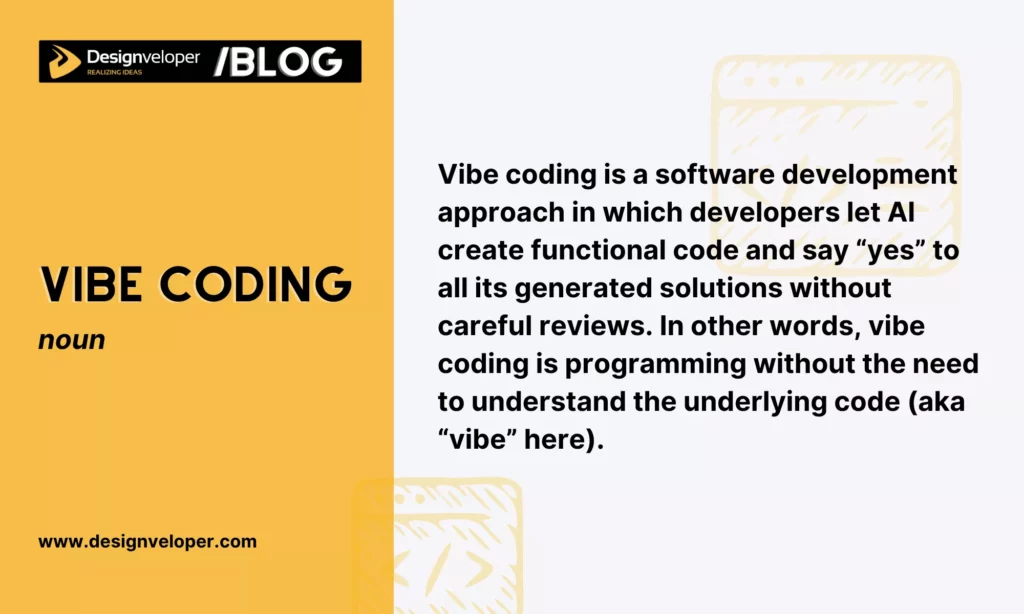
What is Vibe Coding?
Many people define vibe coding as a programming technique that uses large language models (LLMs) to write code on a person’s behalf. In other words, you give AI assistants like GPT-5, Claude, or Copilot some natural language prompts and let them generate an array of coding lines that are used to build a complete application.
This definition is not totally accurate. According to Andrej Karpathy, who coined the term vibe coding, vibe coding isn’t actually coding. It’s just about seeing stuff, saying stuff, running stuff, and copy-pasting stuff, and then, the code mostly works. Merriam-Webster, America’s most trusted dictionary, also mentions this term as something done in a careless way.
Simon Willison, Datasette’s creator, also shared the same perspective on vibe coding. He believed that not all AI-generated programming is vibe coding. Accordingly, if you let LLMs create code responsibly (but without “forgetting that the code even exists” as Karpathy mentioned), this isn’t vibe coding.
So, in short, vibe coding is a software development approach in which developers let AI create functional code and say “yes” to all its generated solutions without careful reviews. In other words, vibe coding is programming without the need to understand the underlying code (aka “vibe” here).
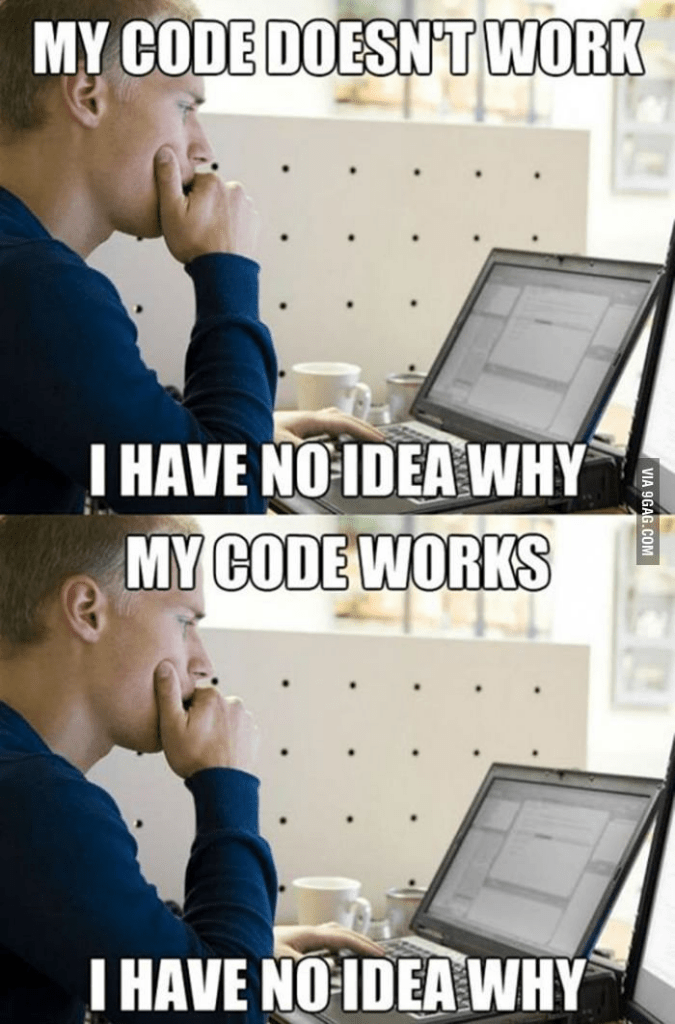
Why Is It Called Vibe Coding? Origin of the Term “Vibe Coding”
The advent and growing adoption of artificial intelligence have turned the role of a software developer from manually coding to guiding, testing, and fine-tuning AI-created code. Also, this advanced technology allows even amateur programmers and non-tech users to build an app without extensive expertise and training in software development.
In fact, using AI to assist our coding tasks isn’t something new. At the end of the 20th century, machine learning advanced and was integrated into coding tools to perform tasks like analyzing code intelligently and enhancing syntax checking.
Since the 2010s, deep learning has thrived, improving natural language processing (NLP) and code understanding. This has contributed to the advent of LLM-enabled coding tools (like GitHub Copilot or Tabnine) that can suggest context-aware code based on our input prompts.
The growing adoption of AI introduced a new concept about development work: vibe coding. The term originated from the X post of Andrej Karpathy – a former AI leader at Tesla and now a co-founder at OpenAI – in February 2025. He coined the term to describe the act of relying heavily on AI tools to write code with pleasure.
His X tweet went viral, turning vibe coding into a recognizable trend. Developers have found it a fun way to build software and have created lots of memes to joke about what vibe coding is and how it works in reality.
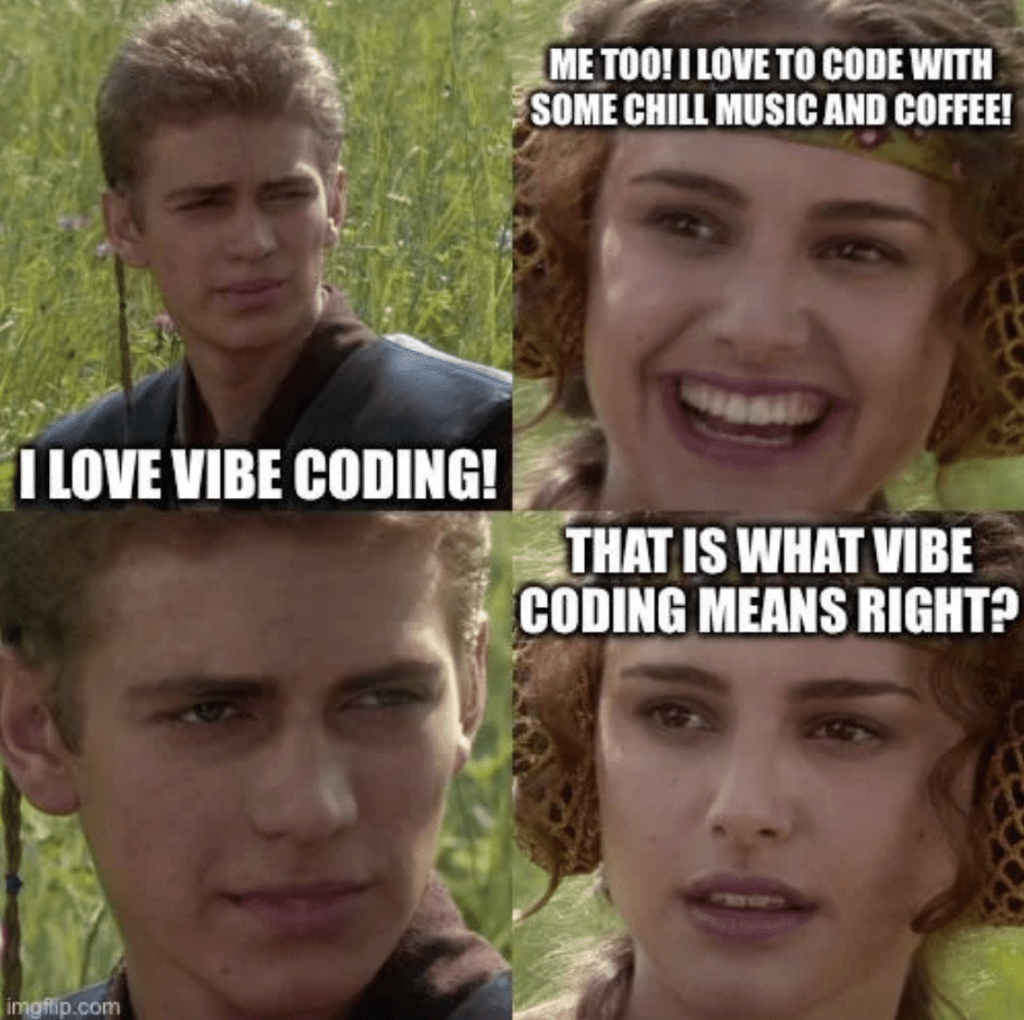
The Role of AI in Vibe Coding
AI is at the core of vibe coding. Tools powered by large language models (like GPT-5, Codex, or Claude) understand natural language prompts and create code based on what developers describe. Boilerplate, logic, or even UI components – these AI tools can cover them all.
Vibe coding removes much of the coding work that already existed in traditional software development. Normally, human developers have extensive technical knowledge to write and debug each line of code.
But vibe coding allows the developers to shift much of that manual coding to prompt-based workflows by giving them instructions to write code, guiding them through feedback, evaluating outputs, and iterating.
As AI generates code so fast, it helps vibe coders prototype their ideas and experiment quickly. If something doesn’t work, they can ask AI to adjust, fix, and regenerate. By lowering technical entry barriers, AI enables even non-developers or those with limited programming skills to develop simple apps.
However, AI can’t take full responsibility for coding work. It can produce features with minimal human hand-holding or sometimes full functionality. But AI works based on common patterns found in its training data, which may have obsolete or inaccurate information. So, its generated outputs may contain errors that can damage the whole software.
For this reason, vibe coding until now has been just coding for fun, as AI hasn’t been capable of self-building software without human supervision.
How Does Vibe Coding Work?
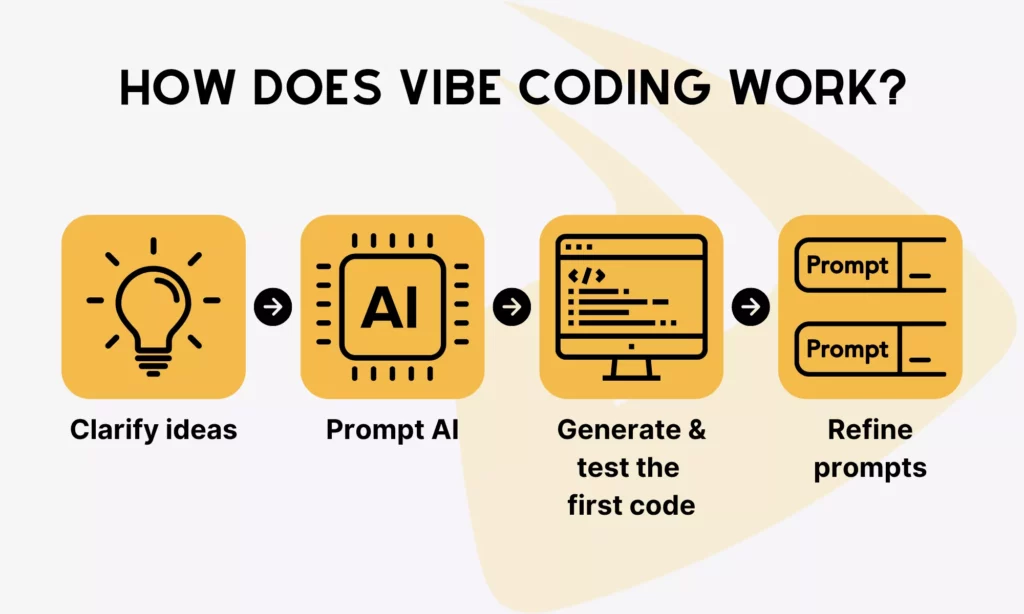
You now understand what vibe coding is. So now, you might feel curious about how vibe coding works with AI assistance. Let’s take a detailed look to see how vibe coding helps you build software from ideation to working code:
Step 1: Clarify ideas or define software requirements
First, you’ll identify what you want to build. Is that some core features or the entire app? For example, you may want a dashboard showing sales data over time with filters by date or a simple to-do list application.
Then, select an AI-powered coding tool that aligns with your technical expertise, cost expectations, and other requirements. Some popular choices include Cursor, Tabnine, GitHub Copilot, and Replit.
Step 2: Prompt the AI
Next, you need to translate your software ideas or requirements into prompts. A well-defined prompt helps vibe coding tools understand what they’re intending to build and generate your desired outcomes. Remember that your input prompts should be specific, goal-oriented, and context-relevant.
Here’s an example: Building a simple mobile app screen using React Native that showcases a centered heading saying “Welcome!” in a large, bold, blue font. Add a button below the heading that says “Get Started” with white text and a light red background. When users press the button, they’re navigated to a new screen titled ‘Main’.
Step 3: Generate & test the first code
After receiving your input requests, the AI coding assistant starts building the fundamental logic or structure of your idea.
The AI-generated code might not be perfect on the first try. That’s why you need to run the code and observe how it initially performs. This allows you to discover what isn’t right and needs improvement.
In this step, AI takes on the heavy lifting, while humans observe or review at the surface level.
Step 4: Refine prompts & give follow-up requests
One noticeable feature of vibe coding is just copying and pasting code lines without further comments, reviews, or modifications, even when these code lines are incorrect. All you need to do is accept what AI coding assistants give you all the time until you get a working application that can meet your individual needs.
If you have sufficient coding knowledge, you can quickly spot errors or issues in AI-generated code. Then, you can fine-tune the initial prompts to re-generate better, more polished code. Even when the AI output has bugs, unexpected behavior, or doesn’t align with the defined specs, you can give follow-up requests to correct or improve the outcome.
Otherwise, for those with no or little technical skills, they ask AI to identify errors, misbehaviors, or design issues. Then, ask AI for corrections.
Is Vibe Coding Truly Effective?
Not really. Although vibe coding sounds interesting, it’s not truly effective in all cases.
Wandering blog posts and forums (typically Reddit) where lots of programmers and non-programmers experimented with vibe coding, you’ll see they all come to one conclusion. That’s why vibe coding is more suitable for hobby and reproduction purposes than for professional tasks.
According to Kevin Roose, a New York Times journalist and a non-professional programmer, vibe coding should be used to resolve specific individual needs.
For example, he used AI-powered assistants to vibe code many small-scale apps, typically LunchBox Buddy, which analyzes fridge content to recommend suitable food for his packed lunch.
However, AI-generated code is limited and contains various errors. Without reviewing the code or having coding-related knowledge, the final deliverable can be prone to defects and hardly work.
Erik Hanchett, a software engineer, also had an interesting experience with vibe coding. He leveraged Amazon Q CLI to develop his personal website. He pretended not to know anything about website development and tried to accept all the code and changes Amazon Q suggested.
Everything seemed to work well from the beginning. But after saying ‘yes’ to all the AI-generated changes, Hanchett started spotting some issues, like removing his nuxt-ui module (this action could ruin all his Tailwind CSS in the app).
Despite some issues as mentioned, AI still proves effective and excellent in several coding aspects.
Hanchett showed his surprise towards Amazon Q’s ability to create tests for each app page and make modifications itself several times until every test passed without extra prompts. Other engineers like Taher Vohra and Prasad Naik also appreciated vibe coding as an accelerator to help programmers acquire new languages and technologies they don’t know yet.
Vibe Coding Examples
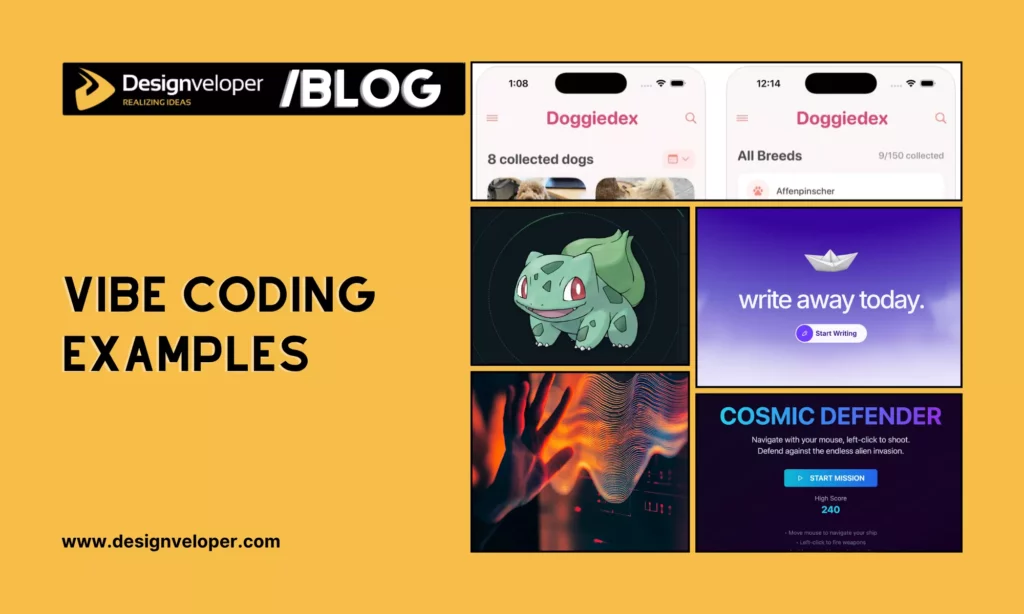
Coding with vibes is considered a fun way to build software, and the majority of developers (72.2%) refuse to use it in their professional development work. However, we can’t deny its potential benefits in today’s era, when even those without formal software training can build something functional for their personal demands.
Below are several vibe coding projects that have been implemented over time:
Dog-e-dex
Cynthia Chen, a Block product designer, spent two months on vibe coding an app that can catalogue dogs discovered in the wild. The app allows users to take a dog photo and upload it, identify the breed using image recognition, and build a personalized dog catalogue.
Despite no formal engineering training, Chen successfully built her dream app with the assistance of Replit and Anthropic’s Claude, coupled with APIs for image recognition, uploads management, and data storage.
During the vibe coding time, she went through so many iterations. Her initial prompts correctly outlined the core features, but the app was creating random dog breeds. After lots of trial and error, she learned how to integrate an image recognition tool to identify the right breeds.
Further, she shared that vibe coding effectively requires a thorough feature list. Otherwise, you have to redo a lot of the foundational setup along the way. Besides, prompting AI in the right way is crucial. You need to be very intentional and specific about what you want AI to do.
Cosmic Defender
Built using Base44, Cosmic Defender is a web-based online game that enables players to pilot a spaceship and fight against alien enemies.
According to the developer, the whole game was built within just 15 minutes but has an interactive interface with smooth performance and eye-catching visual effects. You can easily move the spaceship using a mouse and left-click to shoot enemy fleets.
Pokémon Awesome
Created with v0, Pokémon Awesome allows you to search, compare, and learn about your favorite Pokémons and their characters with hover effects and filtering options. To create this playful interactive web app, the developer used a simple prompt to build production-ready React components styled with Tailwind CSS.
Hand-Waving music app
The app is developed with Rosebud AI to let users play music by waving their hands. Rosebud AI took on visuals, animations, logic, and deployment to build the app that can respond well physical gestures of users through webcam input and play suitable musical notes.
WriteAway
Nathan M. built WriteAway, an AI-native document editor using Bolt.new and Cursor. The solo builder used Bolt to generate the UI and core structure (e.g., real-time suggestion blocks, agentic editing, or document-level chat) while leveraging Cursor to enhance code and implement the basic setup.
How to Use Vibe Coding the Right Way
Although AI is learning everything very quickly, we have to admit one thing: AI is not perfect (like us). Like a child, AI absorbs every information and knowledge from what it’s taught.
So, if the knowledge input is wrong and incomplete, no wonder that AI-generated outcomes are incorrect accordingly. Not to mention that there are various situations in reality that require problem-solving skills and context awareness to make the best decisions.
However, AI hasn’t reached the ability to observe and analyze contexts correctly like human beings. That’s why, if you want to vibe code your app more properly, follow these rules:
1. Choose a Popular Simple Tech Stack
AI coding tools excel at handling problems that human engineers have already resolved on popular platforms (like GitHub or Stack Overflow) and with popular technologies like React, Tailwind, or Express. Therefore, if you choose to vibe code your app with one of the common tech stacks, the possibility of AI coding tools producing bug-free code is much higher.
2. Be Good at Git
Git plays a crucial role as your safety net when working with AI. As already mentioned, AI is very helpful in coding your desired app. However, this advanced technology can produce bugs, make unexpected changes, or even delete your existing work. That’s why you need to be proficient at Git.
This version control system can temporarily save uncommitted changes and record your code at a specific time. It also allows you to go back to the previous version of your code and create isolated coding lines to work on specific fixes or features without compromising the whole codebase. With all these capabilities, Git can protect your work and help you recover from unexpected changes made by vibe coding.
3. Ask What You Do for Your AI Assistant
Vibe coding is changing the role of software engineers. They’re now playing a role as a product manager, and AI is becoming their powerful, versatile assistant. Don’t ask what AI can do for you, but wonder what you can do for your smart assistant first. In other words, if you want AI to do a good job on your behalf, you have to divide complex requirements into small, highly specific tasks and offer the proper context for AI to address problems effectively.
What Is the Difference Between Vibe Coding and Coding?
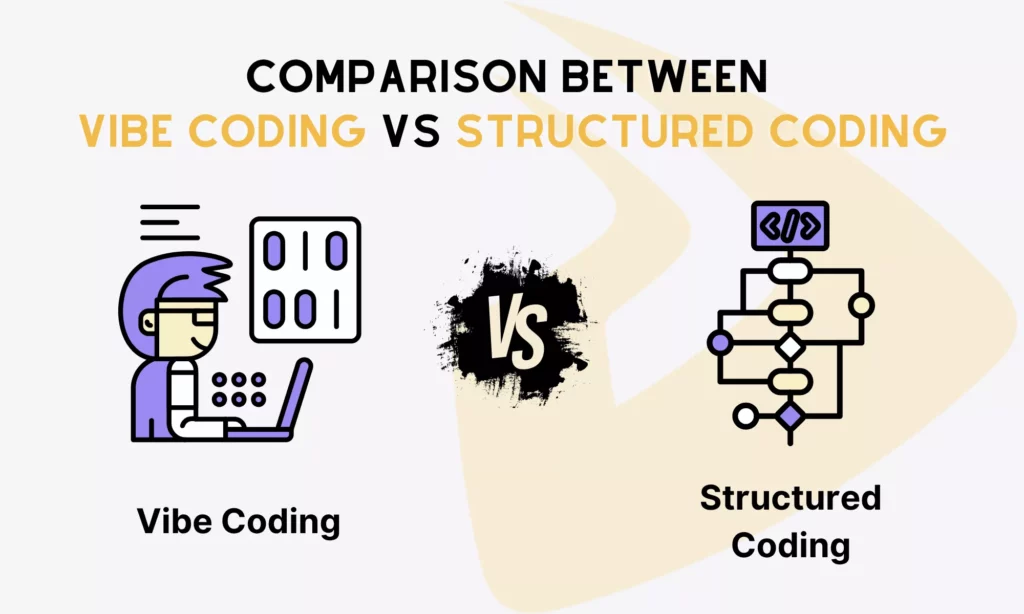
Both vibe coding and structured coding (traditional software development) have the same goal. That’s turning ideas or concepts into working solutions. However, they are different in the way developers work. In this section, we’ll continue to learn about their main differences in the following aspects:
How they start
Vibe coders often start the development process by sending a natural language prompt. Even when they have no or little technical knowledge, only tell AI what they want to build and the AI then generates functional code immediately. So, instead of building from syntax, vibe coders will develop software from prompts.
Traditional developers, meanwhile, write each line of code manually. With extensive coding backgrounds and training, they can also identify the right programming languages, frameworks, libraries, and logic for software development.
The developer’s role
In software development, vibe coders are instructors, supervisors, and editors, you can name it. They describe their desired functionality, test the output with AI’s assistance, and then ask the AI to modify. In short, the main role of vibe coders is to focus on prompting AI, reviewing code at the surface level, and refining prompts until the code is more accurate.
But traditional coders are builders. They have to deeply understand the underlying architecture and code to build every part of the software. Further, they need to cooperate with other specialists (e.g., UI/UX designers and QA engineers) to ensure the software will work as expected.
Tools and workflows
Vibe coders mainly use AI-assisted coding tools, like OpenAI’s Codec, ChatGPT, or Claude, to send prompts. These tools then generate working code, debug errors, and even refactor code automatically based on input prompts. So the workflow in vibe coding feels more conversational than procedural.
But in traditional software development, developers have to rely on the core tools, like IDEs, compilers, and debugging tools. So the efficiency of the development depends heavily on various factors, including the development team’s technical skill and understanding of the codebase.
Code quality and maintenance
AI-generated code may contain logic errors, security vulnerabilities, and inefficiencies. Without thorough human reviews, the code cannot be used in production. However, if humans get deeply involved in code reviews and audits, it’s not called vibe coding anymore.
Meanwhile, traditional development projects require developers to have a deep understanding of the code base and technical skills to code with purpose and perform thorough reviews. Further, they also follow best practices to ensure security and optimize performance. That’s why traditional code is generally cleaner and of higher quality.
Speed and accessibility
Vibe coding is often faster because AI handles the heavy lifting for you. So, even when you have no or little technical knowledge and skills, you can easily go from idea to prototype in minutes.
Meanwhile, traditional coding involves so many steps, from requirements gathering and architecture planning to coding, testing, and maintenance. All require the participation and collaboration between developers, designers, testers, and other specialists. This makes software development slower and less accessible.
What Are the Benefits and Risks of Vibe Coding?
Vibe coding comes with various benefits and limitations. Understanding them helps you identify when to use and avoid vibe coding.
Benefits of Vibe Coding
One of the most visible benefits of vibe coding is quicker prototyping. Vibe coders can describe what they want AI to build using everyday language. Then, the AI generates working code in minutes, allowing vibe coders to prototype quickly without writing each line of code from the ground up.
Vibe coding democratizes software development. Even without strong formal technical training, you can easily vibe code a simple app with the assistance of AI-powered coding assistants like OpenAI’s Codex or GitHub Copilot.
By taking care of technical complexities, vibe coding lets you focus on creative ideas and experimentation. Accordingly, you can test ideas or new features by asking AI to design different patterns without typing each line of code.
Vibe coding also boosts productivity for skilled developers. AI helps them perform repetitive, lower-level tasks, such as coding boilerplate, generating test cases, or writing documentation. With strong technical foundations, they can quickly spot issues in AI-generated code and ask the AI to fix or recreate. Meanwhile, they can focus more on other critical and strategic tasks like building domain-specific features and debugging.
Risks of Vibe Coding
However, because vibe coding means letting AI handle much of the coding work without much human intervention, this new workflow presents various limitations. These challenges hinder it from being officially adopted in various production-ready applications.
First, AI may generate unreliable code. AI tools often use common patterns found in their training data to create code, but may not follow coding standards or best practices. So, their code may hide redundant logic, poor naming conventions, and inefficient functions. All these issues will lead to serious technical debt or performance issues.
Second, vibe coding makes debugging harder. As vibe coders don’t type every line of code manually, they may not understand the underlying codebase.
When errors appear, debugging will become more challenging, and even experienced developers have to waste much more time to fix these issues. The problems become worse when vibe coders have no or little technical knowledge. Accordingly, they may depend on AI again for error fixes, which however may result in circular issues.
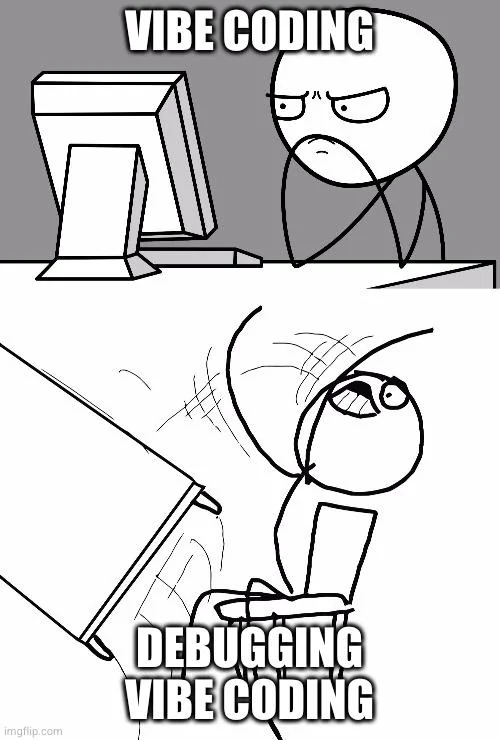
Third, vibe coding can lead to security flaws. As vibe coding means accepting all AI-generated solutions without thorough reviews, vibe coders may confront vulnerabilities, insecure data handling, or exposure to injection attacks that come with AI-generated code.
Fourth, over-dependence on AI, even for simple tasks, may lower hands-on coding skills, algorithmic thinking, and problem-solving.
Last but not least, AI tools are powerful and can generate code almost instantly. But because of their associated risks (like poor-quality or unsafe code), vibe coding tools powered by AI are not suitable for enterprise-grade or complex production systems. These applications often require robust testing, scalability planning, and regular human oversight. That’s why they still need traditional coding discipline for stable performance, reliable architecture, and long-term maintainability.
FAQs about Vibe Coding
Is Vibe Coding a Job?
No, vibe coding is not an official job, but a software development style created along with the rise of AI-assisted coding tools.
As we mentioned throughout this blog post, vibe coding refers to the approach of developing software with vibes. So, vibe coders can be anyone, as long as they let AI do part or the entire coding work on their behalf. Whether you’re a marketing executive, a software engineer, or a business owner, you can vibe code with AI’s assistance.
Is Vibe Coding Controversial?
Yes, since this new development approach was introduced, it has led to mixed reactions among experts and developers.
Some consider it an exciting, creative revolution, opening new doors for even non-developers to bring their app idea to life. Meanwhile, others see it as a risky shortcut that can reduce coding standards.
Wandering around tech forums and communities, we can hear many complaints about its code quality, which makes debugging time-wasting and tricky. However, it doesn’t mean vibe coding is a joke or a fad. It’s still in its early, experimental phase of software development.
This approach relies heavily on AI, so we predict vibe coding will be a crucial part of software development in the future. When AI becomes smarter and less inaccurate, vibe coding will become more reliable.
Final Thoughts and Advice for Software Developers
After this article, we expect you to have a comprehensive understanding of what vibe coding is and whether it’s truly effective in practice. Coding with vibes might be funny and amusing, yet it doesn’t prove completely effective in professional tasks.
Therefore, only depending on vibe coding without considering human factors can ruin your entire work. Just consider vibe coding as an AI assistant to support coding tasks and learn new knowledge instead of completely relying on it to do the whole work for you.
Do you find this topic interesting and useful? If yes, subscribe to our blog to receive more educational content and stay updated about this topic. And don’t forget to follow us on Facebook, X, and LinkedIn if you want to share your idea about vibe coding with us! We’re eager to listen to your perspectives and experience!


